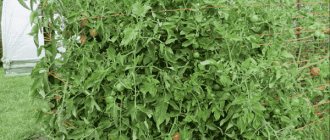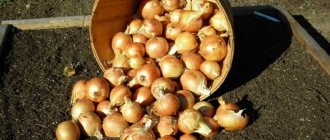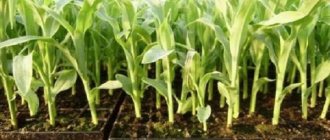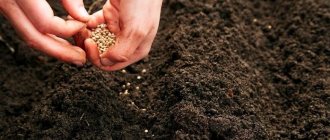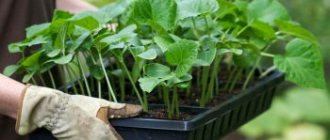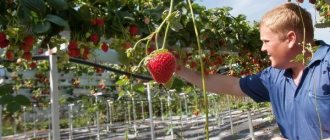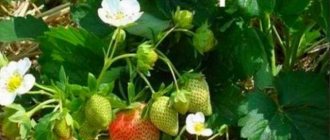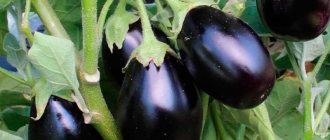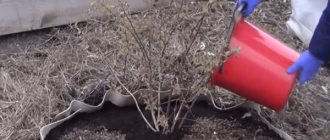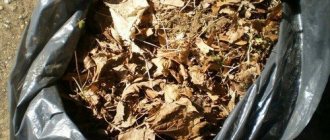What is the advantage of the method?
Growing strawberries in bags has recently become widespread for a reason. This method has several advantages:
- During the year, the berry bears fruit up to five times or more.
- Strawberry bushes are much less likely to be exposed to various diseases and pest damage.
- Growing strawberries in bags takes up little space, regardless of where they grow. But this is especially true for greenhouses, where every square meter of area is painted down to the centimeter.
- With this method of growing strawberries, there are no weeds.
- Growing strawberries in bags all year round is very profitable, as fresh berries provide seven vitamins. With a good harvest, there is always a surplus that can be sold.
- A business built on growing berries in this way always brings profit.
Planting bags
To grow berries, you need to stock up on bags. You can buy them or make them yourself. To do this, you will need polyethylene reinforced fabric. Usually the diameter of the bags is 20 cm, the length is no more than two meters. A long side seam and one short seam, which will be the bottom, are soldered together. The bags are filled with soil and tied at the top with rope. Cross-shaped holes up to 10 cm are made across their entire area, the distance between them should be at least 20 cm. Then drain holes are made through which excess water will drain. Prepared bags are a kind of beds for plants. They are placed in a designated area vertically or horizontally.
Preparing bags
Ideal conditions for the growth of large berries are provided not only by compliance with greenhouse conditions, but also by proper preparation of bags for planting. For these purposes, thick plastic bags are used, preferably made of white film, the thickness of which should not exceed 0.25-0.35 mm, as it allows maintaining the light regime for the plant, or, less often, industrial bags made of flour or sugar. The diameter of the container is 13-16 cm, length 200-215 cm.
The bags are filled with peat and perlite substrate and sealed on one side. It is not necessary to build such containers yourself; you can purchase ready-made ones in special stores or agricultural companies. In this case, you should choose the one with the largest diameter. This will not affect the yield in any way, and the use of the working area will be more efficient.
You should also pay attention to the system for attaching containers to the wall or ceiling of the greenhouse. For these purposes, they either attach hooks to the arches of the frame, or organize trellises, on which improvised beds are subsequently hung. If the substrate is prepared independently, preference should be given to slightly acidic, neutral, light soils. As a rule, a mixture of turf soil, small sawdust and sand in equal proportions is used for filling. Organic fertilizers must be added - humus and cow manure, but not more than 2.5-3.5% per container.
The substrate is thoroughly mixed. The bottom of the container is filled with a small amount of expanded clay; this will ensure good drainage and prevent stagnation of moisture and rotting of the strawberry roots. Then, on top of the drainage layer, a damp substrate with fertilizers is placed tightly and the bag is closed.
Priming
How successful growing strawberries in bags will be depends largely on the soil. In order for crop seedlings to grow and develop fully, the soil mixture must be of high quality. Strawberries prefer neutral or slightly acidic soil. You can fill bags with purchased soil, or you can prepare it yourself. To do this, you will need garden soil, to which you need to add humus, sand and sawdust in equal quantities. Before filling the bags, the ground should be treated (that is, spilled well) with a weak solution of potassium permanganate to destroy pathogenic microbes and insects.
Selection of seedlings
The survival of plants in a new place and their further development and fruiting depend on the planting material. Therefore, you should consider some recommendations:
- You should not choose tall bushes, otherwise they will shade other plants.
- It is better to buy seedlings of different varieties of strawberries, which will ripen at different periods. This will significantly extend fruiting time.
- If strawberries in bags are grown in greenhouse conditions, plants of self-pollinating varieties should be planted so that the flowers are not artificially pollinated later.
Which varieties are better to choose?
Did you know? There are more than 600 varieties of strawberries in the world, varying in taste, size and texture.
In order to grow strawberries in a greenhouse in bags, only that type of berry is suitable that does not require special care, can bear fruit for a long time, grows quickly and produces a bountiful harvest. In addition, the selected plant varieties must be self-pollinating, since the strawberries will grow in a closed greenhouse.
These characteristics, according to breeders, are possessed by the following strawberry varieties:
- Marshall is a sweet-tasting berry; a slight sourness may be felt. The variety produces large fruits, has good disease resistance and is insensitive to temperature changes. The yield reaches one kilogram per bush.
- Albion is a remontant variety, distinguished by its large, elongated berries. The harvest from one bush can be up to two kilograms. The taste of the berry is sweetish with dense pulp. The plant will need to be fed and watered more often.
- Geneva is a popular remontant variety that produces large, elongated berries. These strawberries have a pleasant taste, they can be stored for a long time and even transported if necessary. Harvests can be harvested approximately every 15 days.
- Gigantella is a variety distinguished by large fruits with a pleasant taste. The first berries obtained reach a weight of 120g, but in subsequent harvests the strawberries will be smaller in volume. You can collect about a kilogram of berries from a bush.
For propagation, you can buy other varieties or use your own seedlings if the berry meets the required characteristics.
Interesting! Several decades ago, scientists developed white strawberries, which were the product of crossing strawberries and pineapples. However, in our time this variety is lost.
Technology for growing strawberries in bags
This method is especially relevant in the absence of significant areas. The technological process of growing berries using such a growing location does not cause difficulties, but on the contrary, it facilitates the gardener’s work in caring for the crop, thereby increasing productivity. It is very important to consider the following recommendations:
- If the bags are placed vertically, expanded clay is first poured onto their bottom. With this arrangement, the holes through which the seedlings are planted in the ground are made across the entire area of the bag according to the chessboard principle. Bags of soil are placed on top of each other (up to about three pieces) or hung on stable supports or hooks.
- If strawberries are grown in bags in a greenhouse using vertical placement, then lighting is a very important indicator for normal growth. To do this, from time to time the bags should be turned towards the sun so that the plants are illuminated evenly. Strawberries need air. In order for its access to be free, you need to place three bags, no more, on one square meter of the greenhouse area.
- According to the recommendations of experts, the lower bags should be placed at a short distance from the floor surface to avoid damage to the seedlings by slugs.
- When placing the bags horizontally, the plants are watered in the same way as when grown in the usual way. If they are hung on hooks or stand one on top of the other, drip irrigation is indispensable.
- In regions with cold climates, growing strawberries in bags in open ground involves additional hassle. For the winter, the original beds should be moved indoors. Of course, they can be left outside if they are reliably protected from frost.
- When caring for strawberries, there is no need to mulch, since the soil is in a bag, the surface of which copes well with this. There is also no need for weeding and loosening.
- When planting seedlings, the growing point is not buried; it should be located at the same level with the ground.
- When the berry ripening period begins, the soil should be enriched with fertilizer once every seven days. You can use potassium supplements or chicken manure.
- In order for new plants to develop better, old foliage should be removed after harvesting.
- The soil in the bags and the plants in them are used for two years, then everything changes.
Recommendations for feeding and pruning plants
To ensure the ripening of the berries, you need to regularly feed the strawberries. It is especially important to do this during flowering.
Potassium fertilizers should be chosen as top dressing. Fertilizing with a solution based on chicken manure also helps achieve excellent results. The plant should be fed weekly so that the soil is constantly saturated with elements beneficial to strawberries.
In addition, you need to regularly trim dried leaves and stems so that the plant does not waste the nutrients it receives on them.
To harvest a good strawberry harvest throughout the year, you will need to plant the plants in bags every couple of months. To do this, it is necessary to preserve the seedlings, providing them with suitable conditions.
Did you know? The largest berry was picked in 1983 in the city of Rolkeston, Kent, USA. Her weight was 231 grams. True, the berry tasted watery and sour.
Young bushes are placed in the basement or refrigerator at a temperature maintained there from zero to two degrees and a humidity level of approximately 90%. It is better to place the seedlings in plastic bags.
Growing strawberries using Dutch technology in bags in a greenhouse will undoubtedly meet all the expectations of any gardener. To do this, it is necessary to equip the equipment for irrigation and lighting systems, as well as maintain humidity and temperature indicators at the optimal level. If you follow all the recommendations described above, you will definitely be satisfied with the result.
Bags and greenhouse to help strawberry business
How to plant seedlings correctly?
Bags are an unusual growing medium for plants. Therefore, it is important that the strawberries feel comfortable. To do this, the following rules must be observed:
- Before planting, the seedlings are first immersed in hot water for 15 minutes, and then in cold water for the same time. This is necessary in order to prevent pathogens and pests from getting into the bag along with the strawberry bushes.
- Holes are made in the slits on the bags. Their size should be such that the roots can fit freely. For ease of planting, vertically positioned bags are tilted. As a garden tool, you can take an ordinary spoon or a small scoop.
- The roots should not curl up when planting. First you need to straighten them, and then sprinkle them with soil on top and compact them.
Landing Features
Depending on how the bags of soil are placed, planting strawberries differs. If their location is vertical, the roots of the plants are well buried, and if they are horizontal, they are buried to a shallow depth. Strawberry roots should not remain exposed for more than 10 minutes, so seedlings should be kept in moist soil before planting. Depending on the size of the bag, the planting density can be from 9 to 25 plants. After planting, the bag beds should be watered. In about a week, the strawberries will be ready. During this period, it needs foliar feeding.
The Dutch method of growing strawberries in bags
A distinctive feature of this berry breeding technology is the frequent planting of seedlings (every two months), thanks to which strawberries bear fruit all year round. The bags are filled with weed-free soil enriched with useful substances. Peat and perlite are added to it. The Dutch system is used when growing strawberries only in a greenhouse or on a loggia. Strawberry seedlings for mass cultivation are bought in the store. To make the bushes grow faster, they should be soaked in water for a couple of hours. Growing berries using this system is not difficult, it is important to follow some recommendations:
- Strawberries are a light-loving crop, so daylight hours can be extended with the help of fluorescent lamps that are installed above each bag.
- To maintain optimal temperature, the greenhouse must be heated in winter.
- Plants must be ventilated regularly, so powerful ventilation should be installed.
- To get a good harvest, strawberries are planted in portions all year round.
- In a greenhouse or other adapted room, maintaining the temperature regime is a prerequisite. Strawberries develop normally at 21-23 °C.
- It is necessary to provide proper care, which consists of watering and harvesting. The irrigation system must be arranged in advance. To do this, five or six tubes are removed from a large plastic bottle, each of them is lowered into a bag after 50 cm. Water must be constantly poured into the bottle. For one bag of seedlings, two liters of liquid per day is enough.
Features of care
Like any crop, strawberries grown in bags require proper care. Particular attention should be paid to:
- watering;
- lighting;
- temperature conditions;
- feeding;
- prevention against infections and pests.
Features of watering
Proper watering is an important condition for obtaining a good harvest. The soil should not be over-dried or over-moistened. Drip irrigation is used to distribute moisture evenly. Water flows through a common pipe, from which tubes with droppers are connected to the bags. The system can be purchased ready-made or made independently from medical droppers. The tube is placed under each bush.
It is recommended to water with water at a temperature of +15 °C. For a 30-liter bag, 2 liters of water per day is enough. Immediately after planting, each bush is watered with 0.5-0.8 liters of water.
ADVICE! Fertilizers are applied through drip irrigation: they are immediately absorbed and do not fall on the leaves and fruits, which eliminates burns.
Lighting conditions
The flowering and number of strawberry fruits depends on the lighting. The more light, the more abundantly the crop will form flower stalks.
- With 16 hours of light, strawberries bloom on the 10th-12th day, and bear fruit after one month.
- At 8 hours, it blooms in 15-16 days, and the fruits ripen in 1.5 months.
To cultivate strawberries in greenhouse conditions, you need a 12-hour daylight hours. To create such conditions, fluorescent lamps are placed in the greenhouse. With insufficient lighting levels, the crop stretches and weakens, which negatively affects the yield.
IMPORTANT! It is recommended to turn the lamps on and off at the same time.
Temperature
The optimal temperature for growing strawberries in bags is 20…25 °C. At lower temperatures, growth slows down. No special equipment required. A simple thermometer will allow you to monitor the air temperature. Heaters are installed in the room, which turn on if the temperature drops. If the temperature is too high, simply ventilate, but the crop must be protected from drafts.
For good fruiting, humidity is kept at 70-75%. To keep the humidity at this level, spray the bottom of the air and bags.
ADVICE! A high concentration of CO2 (from 0.16 to 0.21%) has a positive effect on the yield in a greenhouse. To get this effect, burn an ordinary candle.
Feeding
Fertilize every week. They are especially important during flowering. Recommended to use:
- chicken manure (dilute 1 part of the manure to 20 parts of water);
- mullein (1 part fertilizer to 10 parts water);
- ash (200-210 grams of plant ash and 300-310 grams of wood ash per 1 m2).
Liquid complex fertilizers are also used; they are added to the water when watering. A day, 2 liters of solution is enough to feed one 30-liter bag of strawberries. The solution is prepared from 20 grams of fertilizer (phosphorus, potassium and nitrogen in equal parts) and a bucket of water at room temperature.
ADVICE! It is not recommended to use chlorine-containing fertilizers to fertilize strawberries and prepare the soil.
In the second year, strawberries are fed at the beginning of the growing season. This is due to a decrease in the concentration of nutrients in the soil. It is recommended to grow strawberries in bags for no more than 2 seasons, then the adult plants are removed (you can take the tendrils from them), and the soil is poured into the garden.
To get fresh berries all year round, new seedlings are placed in bags after 2 months. To do this, seedlings are stored under certain conditions. The seedlings are placed in plastic bags and laid out in a basement or refrigerator, where the temperature is from 0 to +2°C and the humidity is about 90%.
Horizontal placement of strawberries
You can grow berries in bags using this principle on the street, and not just in a greenhouse. This method is suitable for large rooms or open ground. The bags are placed directly on the ground or on racks placed in several rows horizontally. As for open ground, if the area of the plot allows, you can make many long rows, leaving row spacing the width of a person’s passage. When it rains in open ground, the plants are covered with film so that excess moisture does not get into the bags and the roots do not begin to rot. The horizontal method is very convenient, since the bushes in polyethylene do not need to be mulched, and the ground does not need to be weeded and loosened.
Vertical growing method
Vertical cultivation of strawberries in bags significantly saves space both in the greenhouse and in the garden beds. When growing strawberries outdoors, the bags can be installed near the fence, which will serve as a reliable support. Only in this case, unusual beds will have to be rotated periodically to provide the plants with uniform lighting. If you arrange special supports in the middle of the garden, this is not necessary. Planting vertically in open ground is not always convenient, since it can only be used in the summer. In a greenhouse, this method is used year-round.
An example of growing strawberries in bags step by step:
- First you need to prepare the bags and fill them with soil enriched with fertilizers.
- Then the containers should be tied with a rope and placed vertically or hung on hooks. You can install bags in two or three tiers.
- After this, you need to make holes for planting strawberry bushes at a distance of 20 cm from each other.
- The final stage is the arrangement of an irrigation system, heating and additional lighting if the strawberries are growing in a greenhouse.
How to plant – vertically or horizontally
Using bags for planting is the most convenient and easiest way to equip a vertical or horizontal bed. When placing plants, space is saved and care is simplified. You can plant much more bushes, therefore, you can get an increase in the yield of tasty products.
Placing bushes in open ground
The method of placing in bags is suitable primarily for small areas. Vertical beds can be placed in places where ordinary beds cannot be placed. For example, install along a fence, on an area near a pool or flower bed.
Green bushes with white flowers and ripe berries look especially picturesque in a canopy form, being a unique decoration of the country landscape. Horizontal placement of bags is quite appropriate both on the ground and on racks or tiers. This will save space and increase product yield.
Rules for planting in a greenhouse
Both placement options are quite acceptable in a greenhouse. If conditions permit, narrow vertical bags can be hung on special supports, and horizontal ones can be placed in several tiers. This technique makes it possible to use greenhouse space with great efficiency, not only in the horizontal, but also in the vertical plane.
Placing bags in greenhouses on the second tier allows for efficient use of space
Placing bags at home
Small bags are easily installed where there is at least a minimum of space, for example, on a loggia or veranda. In this case, a vertical arrangement is a good idea. Small vertical bags are suitable for placement on the loggia. The decision on the need for a particular placement is made depending on the existing conditions.
